9 Woods Safe For Gecko Tanks [and 16 to Avoid]
Strolling around a shoreline littered with dead branches can be your usual sight. Perhaps, even the thought of using these woods as tank decorations might have already crossed your mind. But should you do this?
Driftwoods and dry woods are the safest woods for geckos. Among them the top 9 are:
- Juniperus californica
- Cylindropuntia spp.
- Diospyros ebonasea
- Arctostaphylos spp.
- Colophospermum mopane
- Rhododendron spp.
- Bambusa spp.
- Quercus suber
- Vitis spp.
Woods that contain the following needs to be avoided at all cost in a gecko tank:
- Oils
- Resins
- Thorns
- Chemicals
Keep on scrolling to learn something new today.
What Are Safe And Toxic Wild Woods For Geckos?
In times when you are on a tight budget, purchasing other woods for your gecko’s tank may hurt your wallet. So, you might have thought of randomly picking up what is available around you.
Although you can certainly do this at your own risk, you should still be aware of what you bring home. Just like plant accessories, some woods may be totally safe. However, others could instantly hurt your gecko.
What Are The 2 Types of Safe Woods?
Driftwoods and drywoods are the two types of tank-safe woods for geckos.
| Driftwoods | Dry Woods |
|---|---|
| Juniperus californica Cylindropuntia spp. Diospyros ebonasea Arctostaphylos spp. Colophospermum mopane Rhododendron spp. | Bambusa spp. Quercus suber Vitis spp. |
Even though it is true that you can use them interchangeably, one type may be more preferred than the other in specific circumstances. If you utilize them accordingly, you can even increase their longevity and reduce their health risks.
Driftwoods
Driftwoods are literally woods that have been drifting above bodies of water for quite some time. They can be any hard or softwood tree species—typically a branch—that are washed ashore. Due to natural weathering and sun bleaching, they are commonly light-colored in many unique forms and sizes.
What makes driftwoods safe for use in gecko tanks is the prolonged saturation process over a period of time. The long process has completely extracted any potentially hazardous chemicals out of the woods like oils and resins.
However, even if the driftwood has been aimlessly floating above waters for a few years, you should still be mindful. It could possess low levels of tannins—chemicals that help protect the plant from pathogens. Nevertheless, you can still be confident that any driftwood you may find should be entirely safe for tanks.
Apart from this, they are ideal decorations because they possess either of these two qualities:
- A slow rate of decay
- Strong resistance to rot
While they are initially popular as aquarium accessories, driftwoods have extended their use in dry tanks, such as vivariums—tanks with little to no aquatic elements. As a result, you can efficiently utilize them in your gecko enclosures with no problem at all.
Here are six common driftwood species you can add to your tank:
1. California Driftwood
Scientific Name: Juniperus californica
Botanical Name: California Driftwood
Other Common Names: Ghostwood
Origin: Woodlands of California
California driftwood has a lot of species to choose from. And depending on where you get it, it may vary slightly in appearance. The widely sold softwood within the United States is the Juniperus californica. This driftwood has earned its common name due to its typical pale and paranormal-like arrangements.
Pros:
- Does not discolor when heavily misted
- Holds up for a relatively long time to give off a settled look
- Offers a unique look in a vivarium due to its exotic formation
- Provides a good place for geckos to hide
Cons:
- Lasts long but is not rot-resistant
- Requires a firm foundation to stand
2. Cholla Wood
Scientific Name: Cylindropuntia spp.
Botanical Name: Cholla Wood
Other Common Names: Cacti Wood, Cactus Skeleton
Origin: Deserts of North and South America
Cholla wood is actually a skeleton of the dead Cholla species cactus. It exhibits seemingly realistic details that almost look artificial. Due to its classic wood design, most gecko owners use this softwood to fit the desert theme common to leopard gecko tanks. This wood is also typically used in furniture and construction.
Pros:
- Decorates the tank with its fascinating look
- Provides ease of climbing spots with its pores
- Stands securely due to its high density
Cons:
- Breaks down faster than other driftwoods
- Harbors bacteria easily due to high porosity
- Needs thorough pre-treatment to remove stuck debris
- Requires regular cleaning to avoid breeding pathogens
3. Malaysian Driftwood
Scientific Name: Diospyros ebonasea
Botanical Name: Malaysian Driftwood
Other Common Names: Blackwood
Origin: Forests of Malaysia
Malaysian driftwood is one of the most commercially used softwoods because of its hardness. It has also gained popularity in aquascaping. So, this has been monikered as the staple child for driftwoods. Whenever you ask reptile hobbyists for recommendations, this softwood would almost always make it to their list!
Pros:
- Adds detail to any enclosure with its exotic look
- Holds up for a long time before decay
- Provides a place for geckos to climb and hide
Cons:
- Discolors the substrate when heavily misted
- Lasts longer than other softwoods but is not rot-resistant
- Leaches amounts of tannins in the substrate when misted
4. Manzanita Wood
Scientific Name: Arctostaphylos spp.
Botanical Name: Red Manzanita Branches
Other Common Names: Chaparral Manzanita Branches
Origin: Heathlands of Western North America
Manzanita wood is a softwood from the many shrub species of the genus Arctostaphylos. Despite being a collection of narrow branches, you would not expect that it is actually denser than other shrubs, similar to its size. This makes the wood more durable than the others, decaying at a much slower rate.
Pros:
- Does not leach a significant amount of tannins
- Decays extremely slow even when heavily misted daily
- Gives off a more extravagant look with its red, white, brown, and black barks
- Provides a place to hide and climb for geckos
- Resists rotting for a long time
Cons:
- Requires more effort when landscaping due to few larger branches
5. Mopani Wood
Scientific Name: Colophospermum mopane
Botanical Name: Mopani Wood
Other Common Names: Gnarly Driftwood
Origin: Grasslands of South Africa
Mopani wood is a hardwood that offers a diversity of looks. With the absence of significant features, you would not readily identify it. The wood can take the appearance of a vast tree trunk or narrow branches coming from all directions. Aside from its aesthetic aspect, the wood’s hardness makes it resistant to termites, making it ideal for furniture and construction.
Pros:
- Gives off a weathered look in the tank
- Lasts much longer than softwoods due to its hardness
- Provides geckos a place to hide and climb
- Stands firmly due to its high density
Cons:
- Leaches tannins in the substrate when misted
- Needs pre-treatment due to ability to hold saps
- Requires monitoring because it is not rot-resistant
6. Spider Wood
Scientific Name: Rhododendron spp.
Botanical Name: Spider Wood
Other Common Names: Azalea Roots
Origin: Shrublands of North America and Forests of Asia
Spider Wood is a fast-growing softwood plant. So, it is not uncommon that you will feel them be lighter compared to other driftwoods in this list. Appearance-wise, this wood is challenging to describe because of the random growth patterns and variations. However, some would suggest that it resembles a dead spider, hence the name.
Pros:
- Adds detail because of its exotic look
- Does not leach tannins to the substrate when misted
- Provides an excellent place to hide for geckos
Cons:
- Decays after a while of usage
- Needs a firm base to stand upright
- Requires monitoring due to rotting
Dry Woods
There are no strict definitions of dry woods. However, you may take it faithfully as woods that are better suited for dry enclosures like vivariums for gecko.
Generally, dry woods are softwoods that are buoyant in nature. So, they are infrequently used in aquariums as decorations. Instead, their woody look has been traditionally utilized in tanks with little to no water elements—such as gecko enclosures. This feature provides a denser forest-like appearance.
Here are three dry wood species that you can use:
1. Bamboo Wood
Scientific Name: Bambusa spp.
Botanical Name: Bamboo Wood
Other Common Names: Bamboo Stakes, Poles, and Hides
Origin: Mountains of Tropical Regions in China
Worldwide, there are over 1,400 species of Bamboo. It is one of the most versatile softwoods used in flooring, furniture, and gardening. Due to its popularity in other aspects, it has also emerged fame in landscaping gecko tanks, with all of its varying size and conditions.
Pros:
- Accentuates a very Asian garden type look
- Has strong resistance to pests
- Makes an excellent humidity chamber
- Provides a stalk to climb to a higher altitude in the tank
- Resists rotting, making it great for long term use
Cons:
- Lacks versatility design-wise due to limited variety of styles
- Leaches tannins when heavily misted
2. Cork Bark
Scientific Name: Quercus suber
Botanical Name: Cork Bark
Other Common Names: Cork Oak Rounds, Flats, and Hides
Origin: Forests of Southwest Europe and Northwest Africa
Cork barks come from cork oak trees, which are evergreen softwood plants. What is odd about this wood is that it basically consists of the same general characteristics. Make sure that is large enough for the gecko to move in and out.
Pros:
- Adds detail to the tank due to its natural look
- Has a resistance to fire
- Holds up for a long time due to its rot-resistance
- Provides a great place to hide and climb
Cons:
- Leaches tannins to substrate when heavily misted
- May harbor bacteria and parasite if left unclean
- Requires a firmer base to erect when it is thin and narrow
3. Grapewood
Scientific Name: Vitis spp.
Botanical Name: Grapewood
Other Common Names: Grapevines
Origin: Vineyards of Mediterranean Region
Grapewood is softwood with lightweight branches well-known for the intertwisting of its narrow vines. So, it can take on any shape of whatever it had rested on when it was growing. Since it decays at a rate like any average softwood, it is most suitably used in dry tanks like leopard gecko enclosures.
Pros:
- Has branches that are great for climbing and basking
- Makes a great cover for geckos due to its breadth
- Provides a unique look due to its exceptional design
Cons:
- Decays quickly as it is not resistant to rot
- Prone to fungus and molds when wet for a long time
- Requires a heavy base to stand firmly
The Woods To Avoid in Gecko Tanks
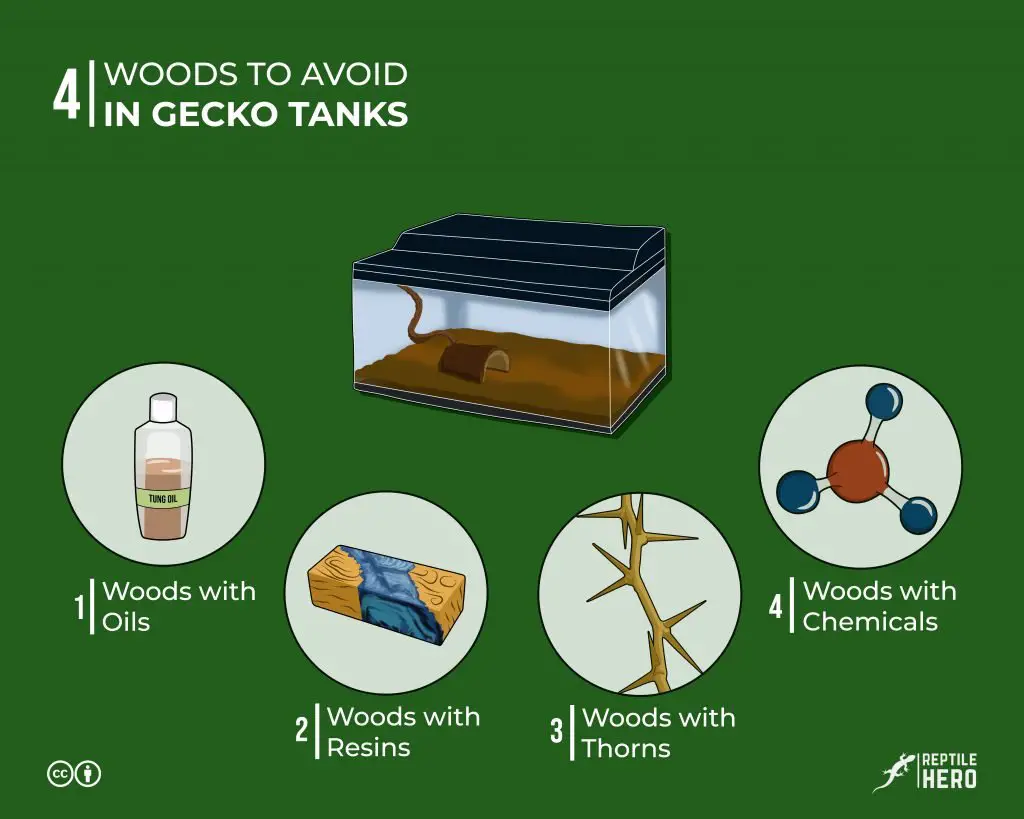
All the woods that contain one or more of the following features should be avoided in a gecko tank as they may pose risks to the gecko’s health:
- Oils
- Resins
- Thorns
- Chemicals
| Woods with Oils | Woods with Resins | Woods with Thorns | Woods with Chemicals |
|---|---|---|---|
| Pinus sp. Eucalyptus sp. Cedrus sp. Cryptomeria japonica Thuja plicata Thuja occindentalis | Abies sp. Juniperus sp. Larix sp. Sequoia sp. Picea sp. Taxus sp. | Crataegus sp. Gleditsia triacanthos | Agricultural Plants Fruit-bearing Trees |
Woods with Oils
Cedarwood (Cedrus sp.), eucalyptus wood, (Eucalyptus sp.), and pinewood (Pinus sp.) should be avoided in a gecko enclosure.
Woods from pine and eucalyptus trees—just like any coniferous and evergreen woods would—produce and secrete volatile aromatic phenols. Although there are reports of muscle twitching in geckos, their health hazard is not yet scientifically established. [1]
Nevertheless, this does not mean that the lack of results from further study permits you to use these woods. In situations like this, you might need to choose your best judgment. You must evaluate available information and decide how it could affect your gecko.
As a result, you would hear and read many reptile owners shunning you away from these common woods—along with cedar.
Cedar
Have you owned a cabinet made from cedar wood? Did you notice any unique quality it has? If you have not, let me tell you this.
Cedar (Cedrus sp.) woods possess wood oils that provide them:
- a strong resistance to decay
- a natural repellent to insects
In the research conducted by a group of researchers, they found that the oil of a false cedar called white cedar (Thuja occidentalis) has three major components [2]:
- α‐thujone (69.8%)
- β‐thujone (9.5%)
- fenchone (7.8%)
Specifically, α‐thujone and β‐thujone are of interest because of their known insecticidal and rot-resistance properties. However, the presence of these compounds—that make cedar woods long-lived and ideal home furniture—poses a great danger for your geckos!
According to reports, reptiles—such as leopard and crested geckos—exposed to cedarwood may gradually manifest respiratory symptoms or develop skin lesions. Thus, depending on where you are, you should avoid using this wood inside the tank at all costs.
Although they are not true cedars from the genus Cedrus, some woods bearing the name commonly sold in commercial products include [3]:
- Japanese Cedar (Cryptomeria japonica)
- Western Red Cedar (Thuja plicata)
- White Cedar (Thuja occindentalis)
Woods with Resins
When you freshly log a branch from a coniferous tree like a Fir (Abies sp.), there are chances that you would see a liquid oozing out at the chopped site. And you may immediately think of it as a sap. But you can be mistaken.
All plants have a sap—a yellowish or white substance that is sticky or gummy [4]. As a matter of fact, a team of researchers has observed an interesting behavior that may debunk the danger of saps in certain gecko species [5].
- In an incidental interaction, they found an Ocellated Velvet Gecko (Oedura monilis) feeding on a tree sap for about two hours.
- The team has concluded that although this behavior is mainly unnoticed, certain geckos may opportunistically feed on readily available plant resources.
Going back to the oozing liquid from a Firwood, this substance is actually called a resin. And this thick and sticky liquid is what makes it dangerous for your gecko. Apart from Fir trees, you would observe this viscous substance in other coniferous trees like:
- Cedar (Cedrus sp.)
- Juniper (Juniperus sp.)
- Larch (Larix sp.)
- Pine (Pinus sp.)
- Redwood (Sequoia sp.)
- Spruce (Picea sp.)
- Yew (Taxus sp.)
Much like how the blood clots open wounds, resins work in the same manner on wounded barks of coniferous trees. In addition, they also provide an additional protective mechanism against disease and infestation [6].
However, much like volatile oils, a resin is often toxic to geckos, posing skin problems. Occasionally, its sticky property can also lead to trapping the reptile in the wood, hurting itself as the resin hardens over time.
In case you are willing to age the Firwood for more than a year, the amount of time may be enough to get rid of the resins. But just like any other softwoods, the Firwood may have already become too brittle to work with.
Woods with Thorns
The presence of thorns around the wood is an indication of not being safe for gecko tank use. Besides, woods with sharp edges and rough texture should be avoided entirely as well. These visually detectable features make it easy for you to prevent physical injuries on your gecko.
There are a lot of woods coming from thorny plant species. Two of the most prevalent and popular ones are:
- Hawthorn (Crataegus sp.)
- Honey Locust (Gleditsia triacanthos)
Woods with Chemicals
Now, you are aware that woods with naturally occurring insect and pest repellents should be entirely avoided. Likewise, any wood treated with chemicals—like fertilizers, pesticides, and preservatives—is a big no-no!
While it is difficult to identify which tree has been treated with chemicals, a general rule is to avoid any woods from agricultural and fruit-bearing trees.
Aside from incessant fertilizers, agricultural plants and fruit trees are infamous for being heavily sprayed with different pesticides like:
- acaricides (for mites and ticks)
- avicides (for pest birds)
- bactericides (for bacteria)
- fungicides (for fungi)
- herbicides (for weeds)
- insecticides (for insects)
- nematicides (for nematodes)
- molluscicides (for snails and slugs)
- rodenticides (for rats and mice)
These pesticides, thus, pose serious health effects on your gecko. In a study on Western Fence Lizard (Sceloporus occidentalis), a team of scientists has shown that [7]:
- High levels of pesticide exposure resulted in a reduction in its speed and endurance.
- This phenomenon could affect its fitness to escape predators in the wild.
So, it is imperative that you should avoid any woods that are recently treated with chemicals. This means literally anything—even the safe ones in the list above.
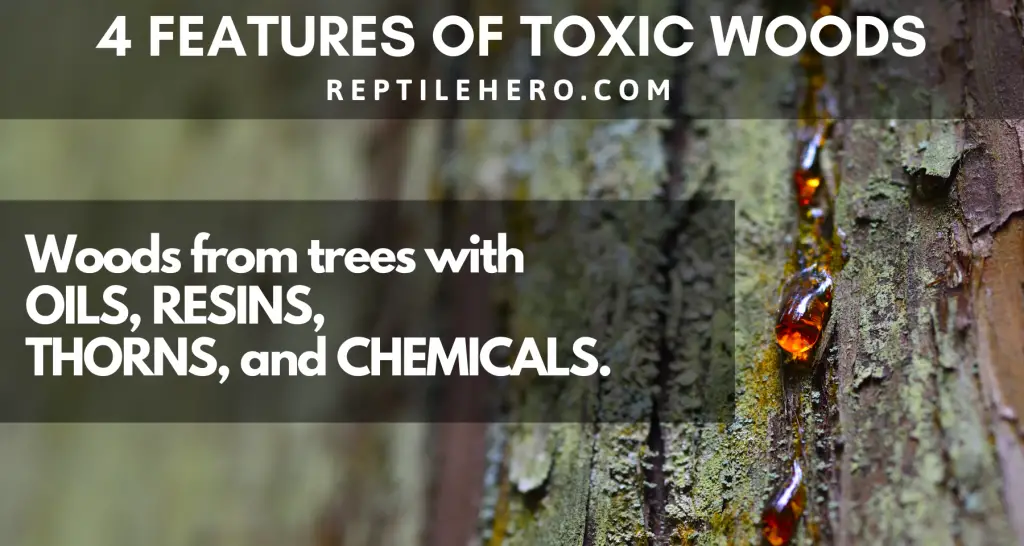
DIY: How To Use Wild Woods For Gecko Tanks?
If you have successfully chosen an appropriately sized wood with a slow decay rate and low toxicity, you cannot directly use it just yet.
Disinfecting is a crucial step that one must never skip. It follows a three-step procedure:
- Prepare
- Sterilize
- Dry
The reason is that the wild wood may contain bugs, insects, and pathogens like bacteria, parasites, fungi, and viruses. Of course, you do not want to threaten your gecko’s health with these easily transmittable guests. So, here are three steps you must follow before using wild woods:
Step 1 – Prepare the Wood
Preparing the wood means that you would prepare it for sterilization. You can do so by:
- Cleaning off all its surface-level dirt with a steel bristle brush
- Filing sharp edges and rough texture
- Removing loose bits and holes that may cause harm
- Using hot water to initially get rid of any microbes
Step 2 – Sterilize the Wood
Like any sterilization process, this step is vital to remove any pathogenic microorganisms invisible to the naked eye.
Since all woods are fibrous and porous, chemical sterilization may do more harm than good. So, the best way to successfully conduct this step is to use a handheld steaming unit. Otherwise, you can follow these five alternatives in the absence of such an appliance in your household.
Sun-bathing
Sun is a great sterilizer. It is natural and free! Sun-bathing the wood is as easy as leaving it under the sun throughout the day. This process effectively kills almost anything you have to worry about.
But you just have to make sure you will be getting plenty of sunlight since the process could last days. Otherwise, you will have a hard time completely drying it out, especially during winter!
Baking
Before proceeding, be warned never to leave the wood unattended inside the oven once the process has started. Wood is a fire hazard, so you are required to check it regularly every 10 minutes or so.
Anyway, baking the wood is placing it in an oven for about an hour. This process would kill any remaining microorganisms that have survived the first step. Like baking pastries, you have to:
- Bake the wood for at least 30 minutes at 130°F or 260°F.
- Allow it to cool the wood before handling it.
Boiling
Boiling may be a safer option, but it can take a tad bit longer than baking. Similarly, this process is effective in removing all microbes after you:
- Soak it to a water depth just enough to submerge the whole piece.
- Set the temperature to 210 to 212°F.
- Boil it for about six hours.
- Cool before handling.
Freezing
If you do not want to deal with hot wood to cool down, you can try deep freezing inside a chest freezer. This process takes longer than boiling though it is just as effective in terminating all the nasties. Ideally, you have to:
- Leave it in deep freeze for at least a week.
- Thaw at room temperature.
- Dry completely before handling.
Soaking
Another alternative you might want to venture on is soaking with activated charcoal. This process takes place similarly to boiling and can neutralize any potentially hazardous chemicals all the same. To do this, you can:
- Soak the wood to a water depth enough to fully submerge it.
- Add activated aquarium charcoal.
- Wait for about a week or so.
- Dry completely before handling.
Step 3 – Dry the Wood
The last step entails completely drying the wood off. Although not all sterilization methods make use of water, it does not mean that you can skip this. Moisture may still adhere within the porous insides of the wood. So, you are better off following either of the two methods below to prevent faster decay.
Air Dry
- Find a clean, dry, and safe area away from bugs, insects, and dust.
- Leave the wood to dry out for five to seven days.
Oven Dry
- Place the wood into an oven.
- Set the temperature to 200°F.
- Dry it for about three hours.
- Check regularly every 10 minutes.
Just a friendly reminder. Although you may hear from many people that disinfecting wild woods is a must, you should actually do the same for purchased ones as well. The same procedure may apply, but you can directly proceed to the second step.
Takeaways
Safe woods for gecko tanks can be classified as either driftwood or dry wood.
Driftwoods are any woods that have drifted above water for a long time. They can be any tree species, but most of them softwood by nature. They can better tolerate regular misting inside the tank.
Dry woods are any softwoods that are dry and buoyant. They are better suited for less humid tanks since these woods cannot handle regular misting.
Just like safe woods, toxic woods can be from any tree species. However, they feature four qualities that make them dangerous for use: 1) oils, 2) resins, 3) thorns, and 4) chemicals.
Before using wild woods, you must first disinfect it by doing this three-step procedure: 1) prepare, 2) sterilize, and 3) dry.
Sources
- [1] http://www.anapsid.org/cedar2.html
- [2] https://onlinelibrary.wiley.com/doi/full/10.1111/eea.12166
- [3] https://oregonstate.edu/trees/conifer_genera/false_cedars.html
- [4] http://www.differencebetween.net/science/nature/difference-between-sap-and-resin/
- [5] https://www.researchgate.net/publication/237085607_Plant_consumption_in_Australian_geckos_sap_feeding_by_the_Ocellated_Velvet_Gecko_Oedure_monilis
- [6] http://www.ratfanclub.org/pine&cdr.html
- [7] https://edis.ifas.ufl.edu/pdf%5CIN%5CIN88100.pdf

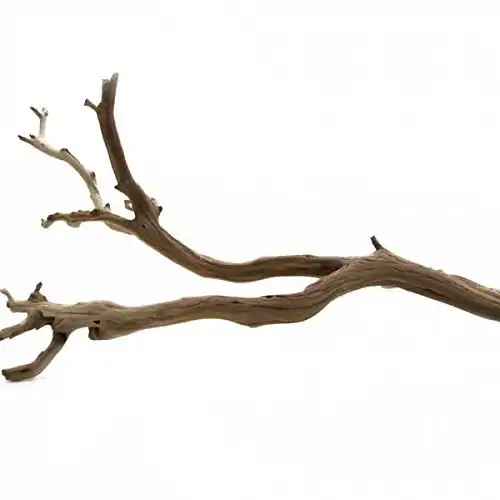
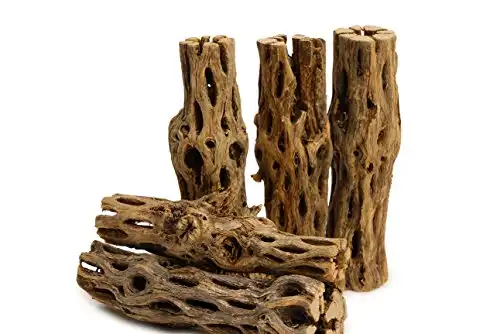
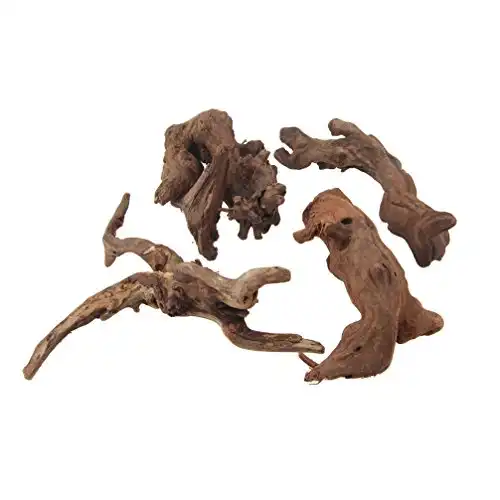
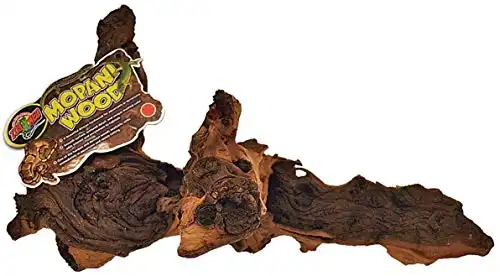
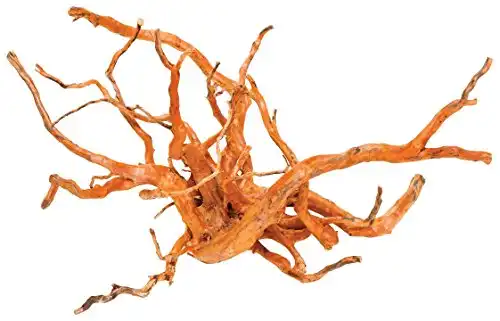
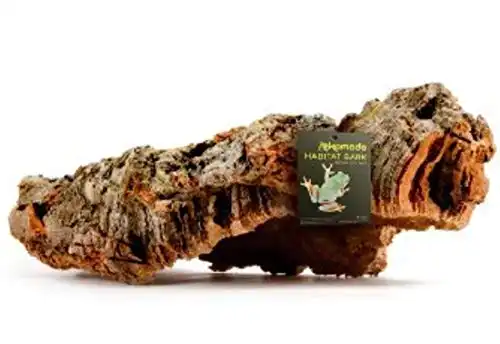
![Is It Possible To Overfeed A Gecko? [4 Signs]](https://www.reptilehero.com/wp-content/uploads/2021/12/overfed-gecko-cc-768x614.jpg)


![The 5 Reasons Why Do Your Geckos Jump [and 5 Precautions]](https://www.reptilehero.com/wp-content/uploads/2022/01/why-geckos-jump-cc-768x614.jpg)
![Does Your Gecko Remember You? [2 Owners’ Stories and Science]](https://www.reptilehero.com/wp-content/uploads/2021/06/Does-your-gecko-remember-you-infographic-768x614.jpg)
